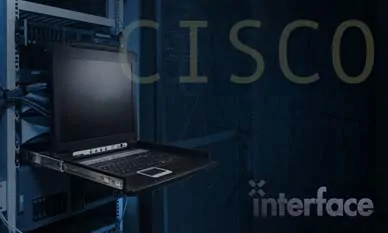
Module 1 Examining Collaboration Solutions
Section 1: Exploring the Path to Collaboration - CLFNDU
- Describe On-Premise deployment
- Examine cloud deployments
- Examine collaboration endpoints
Module 2: Examining SIP Call Signaling and Codecs
Section 4: Exploring Codecs and Call Signaling- CLFNDU, and
Section 2: Exploring Call Signaling over IP Networks -CLCOR
- Describe SIP call signaling, voice and video codecs, RTP and RTCP
- Describe the Call Setup and Teardown Process
- Describe SIP Call Signaling for Call Setup and Teardown
- Explore Media Streams at the Application Layer
- Compare Audio Codecs
- Compare Video Codecs
Module 3: Analyzing and Troubleshooting SIP Signaling
Section 1: Analyzing and Troubleshooting Signaling and Media Protocols- CLACCM
- Analyze and troubleshoot SIP and media protocols
- Examine the characteristics and features of SIP
- SIP Trunking Considerations
- SIP Troubleshooting Tools
- Configuring SIP Traces using RTMT
- Using Wireshark and TranslatorX to read SIP debugs and traces
- Using Cisco Support Tools like CUBE DNA and Collaboration Analyzer to troubleshoot SIP calls
Module 4: Configuring Cisco SIP Trunks and Proxy
- Examine and configure SIP Proxy to route calls and CUCM SIP trunk features and capabilities
- Configuring SIP trunks to provide call routing
- Examining CUCM SIP trunk settings and understanding their purpose
- Examining CUCM SIP Profile settings and understanding their purpose
- Examining SIP Proxy Call Processing
- Configuring SIP Proxy to manage enterprise calls
Module 5 Implementing SIP URI Calling on CUCM
Section 11: Implementing URI Calling in Cisco Unified Communications Manager- CLACCM
- Implementing URI calling in CUCM for calls within a cluster and between clusters
- Provide an overview of URI call routing in CUCM
- Describe Directory URIs in CUCM
- Describe the URI call routing process in CUCM
- Describe how CUCM routes SIP URI calls to other call control systems using SIP route patterns and SIP trunks
- Describe what needs to be considered when implementing URI call routing in CUCM
Module 6: Deploying ILS and GDPR
Section 13: Examining Global Dial Plan Replication- CLACCM
- Describe how to implement ILS between CUCM clusters and enable GDPR This lesson
- Describe global dial plan issues
- Describe the characteristics of ILS and its services
- Describe the components of GDPR and their interaction
- Describe how calls are routed using GDPR
- Describe how to implement PSTN backup for intercluster calls when using GDPR
Module 7: Deploying Cisco SIP Voice Gateways
Section 9: Describing the Cisco ISR as a Voice Gateway - CLFNDU
- Describe the function, purpose, and configuration of the Cisco SIP ISR gateway
- Describe Cisco Voice Gateways
- Describe SIP gateways
- Describe Call Legs and Dial Peers
- Describe Digital Signaling Processors
- Explore the DSP Calculator
Module 8: Configuring Session Border Controllers (CUBEs)
Section 14: Configuring and Troubleshooting Cisco Unified Border Element- CLACCM
- Configure and troubleshoot Cisco Unified Border Element (CUBE)
- Describe the Cisco Unified Border Element
- Describe the call-routing logic in CUBE for numeric and URI calls
- Understand the advanced options for CUBE
- Describe how to manipulate SIP header and SDP elements in CUBE using SIP profiles
- Understand CUBE signaling and media bindings
Module 9: Configuring Additional SIP CUBE Settings
Section 8: Implementing Voice Gateways - CLCOR
- Describe how to implement digit manipulation, Early Offer, and OPTIONS on a Cisco SIP CUBE
- Configuring Voice translation profiles on CUBE
- Configuring SIP Early offer on the CUBE
- Configuring MTP on SIP Trunk to support early offer
- Configuring SIP OPTIONS keepalives on CUBE
Module 10: Configuring CUBE based URI Call Routing
- Configuring inbound URL dial-peer matching
- Configuring outbound URL dial-peer matching
- Configuring SIP Calling and Connected Party Info
- Configuring Provisioning Policies
- Normalizing SIP Messages
Module 11: Configuring the Summary Lab
- Configuring SIP trunks, CUBE, dial plan, and a variety of other settings students learned during the class
- There is a list of requirements that students will fulfill and SIP related problems that students will solve
- This lab helps students solidify concepts and demonstrates their proficiency in building SIP deployments
This course is intended for students who have general knowledge about:
- Cisco Unified Communications Manager
- Professionals with CCNA Voice and/or CCNP Voice Certification
- Customers that need to better understand the SIP protocol
To fully benefit from this course, students should have the following prerequisite skills and knowledge:
- CCNA Voice or equivalent knowledge or,
- Knowledge gained from attending prerequisite courses: VFCC or ACUCM w/AUC
After this course, students will be able to:
- Examine and understand the purpose of SIP requests, responses, and SDP
- Configure SIP trunks and SIP Profiles on Cisco Unified Communication Manager (CUCM)
- Configure SIP call routing on Cisco SIP Proxy (CUSP)
- Configure URI Call routing on both CUCM and Session Border Controllers (CUBEs)
- Configure SIP CUBEs using a variety of features, including translation-profiles, patterns-maps, server groups, provision policies
- Gather SIP traces from servers, CUBEs, routers, phones, endpoints
- Diagnose and resolve SIP call routing issues, including one way audio, misconfiguration, and many other commonly encountered “real world” issues
- Configure and troubleshoot SIP throughout their collaboration enterprise

